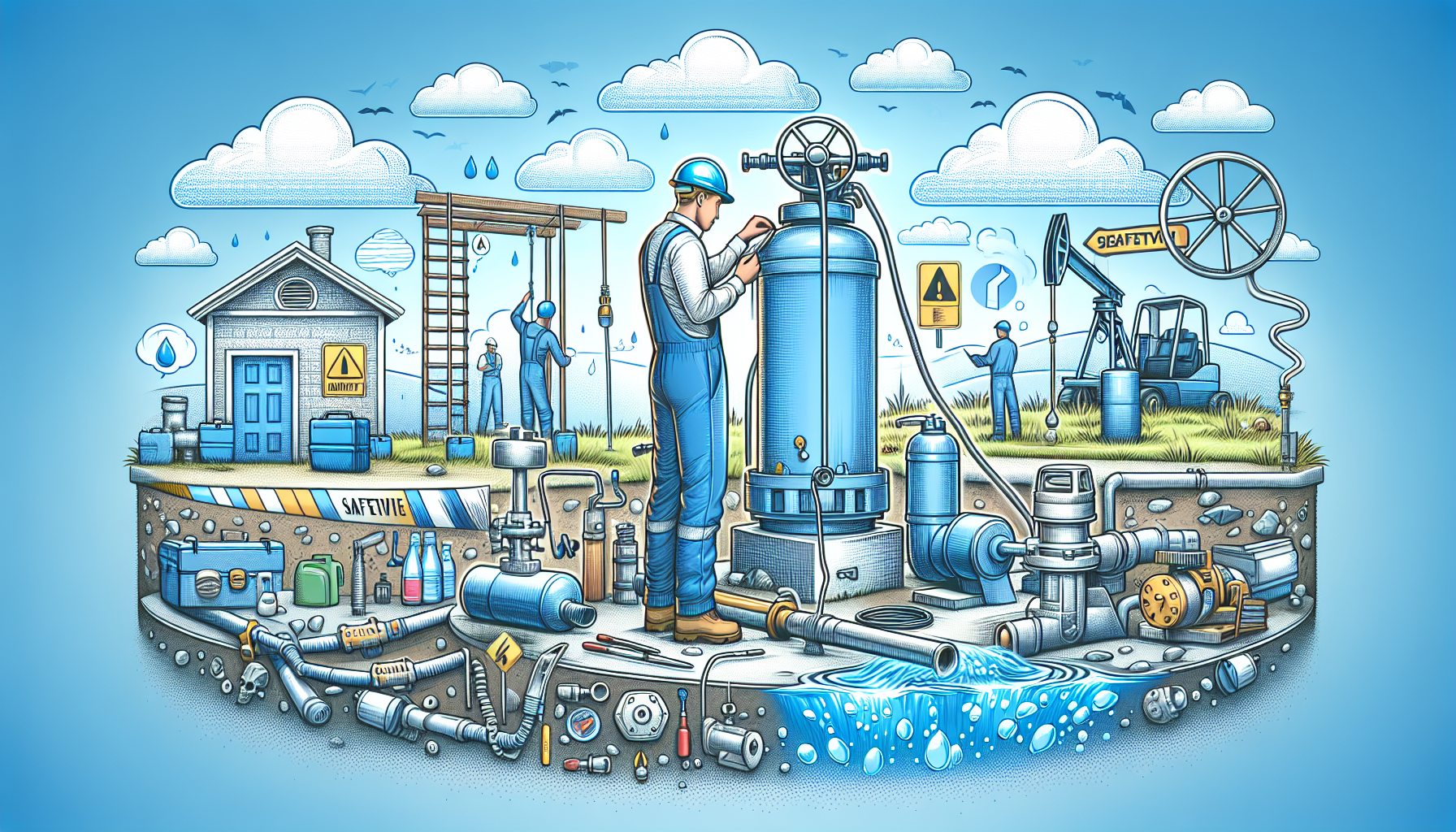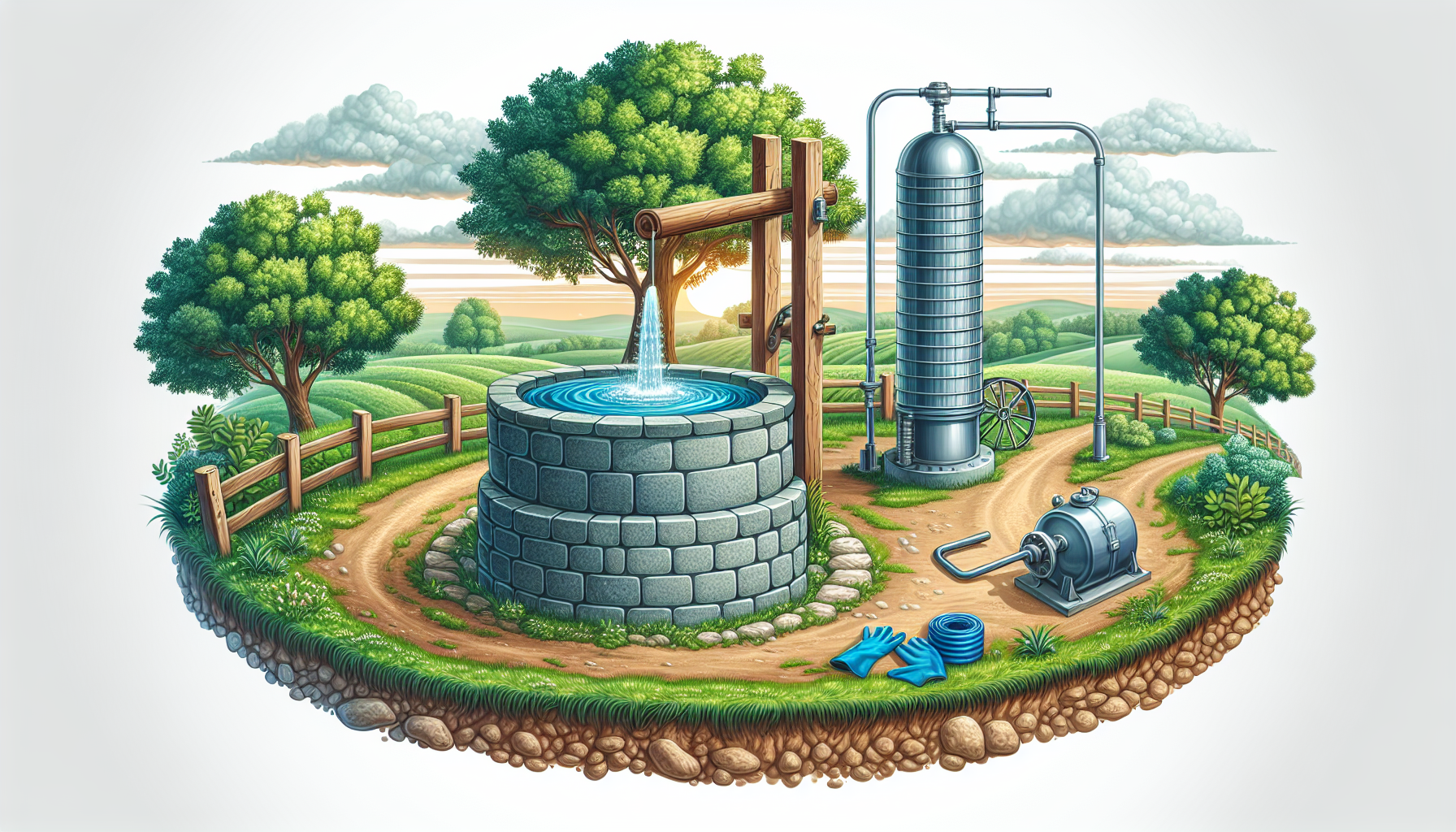Maintaining the safety of your well water is crucial, especially during well water pressure tank maintenance checks. Wondering how you can ensure the well water remains safe throughout the process? Well, we’ve got you covered. In this article, we’ll explore some simple yet effective tips and precautions you can take to maintain the safety of your well water during maintenance checks on your well water pressure tank. With these guidelines, you can have peace of mind knowing that your water supply remains clean and healthy. So let’s dive in and discover how you can keep your well water safe and secure.
Importance of Well Water Safety
Ensuring the safety of your well water is of utmost importance. Not only does it directly affect your health and the health of your family, but it also determines the efficiency and functionality of your well water pressure tank. By maintaining well water safety, you can prevent contamination, maintain good water pressure and flow, and prolong the lifespan of your well system.
Understanding Well Water Pressure Tanks
What is a well water pressure tank?
A well water pressure tank is an essential component of your well system that stores and regulates the water pressure. It acts as a buffer, allowing water to be stored under pressure and released when needed. This helps maintain consistent water pressure throughout your home, especially during peak demand periods.
Significance of well water pressure tanks
Well water pressure tanks play a vital role in preventing the well pump from continuously turning on and off, known as short cycling. They help to regulate the pressure, reducing strain on the pump and extending its lifespan. Additionally, by storing a reservoir of water, pressure tanks ensure a steady flow of water even when demand exceeds the pump’s capacity.
Common issues with well water pressure tanks
Over time, pressure tanks can experience issues that affect their performance. Common problems include low water pressure, short cycling, air or water leaks, and accumulation of sediment or bacteria. Regular maintenance checks allow you to identify and address these issues promptly, ensuring the optimal functioning of your well water pressure tank.

Preparing for Well Water Pressure Tank Maintenance Checks
Before conducting any maintenance work on your well water pressure tank, it is crucial to take necessary precautions to prevent accidents and ensure a smooth process. Here are some steps to prepare for maintenance checks:
Gather necessary tools and protective gear
Make sure you have all the tools required for the maintenance, such as wrenches, pressure gauges, and cleaning supplies. Additionally, wear appropriate protective gear, including gloves and safety goggles, to protect yourself from potential hazards.
Turn off power supply and water source
To avoid any electrical mishaps or water damage, make sure to turn off the power supply to the well pump and shut off the water source. This will prevent any unexpected water flow or accidents while you are working on the pressure tank.
Depressurize the system
Before initiating any maintenance tasks, it is essential to relieve the pressure in the system. Open a nearby faucet to allow the water to drain out and release any built-up pressure in the pressure tank. This step helps prevent accidents and makes it easier to work on the tank safely.
Ensuring Personal Safety
During well water pressure tank maintenance checks, it is crucial to prioritize your personal safety. Taking necessary precautions will minimize the risk of accidents and injuries. Here’s what you can do to ensure your safety:
Wearing appropriate protective clothing
Always wear protective clothing, including gloves, safety goggles, and sturdy footwear, when working on your well water pressure tank. This will protect you from potential hazards such as sharp edges, electrical components, or harmful chemicals.
Working with a partner or informing someone
Having another person present while conducting maintenance checks is highly recommended. They can provide assistance if needed, and in case of an emergency, they will be able to offer help or contact emergency services. If a partner is not available, at least inform someone that you will be performing maintenance work and specify the duration.
Following safety guidelines
Before starting any maintenance tasks, familiarize yourself with the safety guidelines provided by the manufacturer. These guidelines will outline the specific precautions to take while working on the well water pressure tank. Adhering to these guidelines will help ensure your safety and prevent any potential accidents or damages.

Maintaining Well Water Quality
Maintaining the quality of your well water is crucial for your overall health and the longevity of your well system. During maintenance checks, it is essential to take measures to prevent contamination and disinfect the well system when necessary. Here’s what you need to know about maintaining well water quality:
Inspecting water quality before maintenance
Before starting any maintenance tasks, inspect the quality of your well water. Look out for any changes in color, odor, or taste. If you notice any abnormalities, it could indicate a potential issue with your well system. Contact a professional for further evaluation before proceeding with maintenance.
Preventing contamination during maintenance
Take preventive measures to avoid contamination while working on the pressure tank. Make sure to clean your hands thoroughly before handling any components. If you need to remove any fittings or pipes, have clean containers ready to collect any water or debris to prevent it from entering your well system.
Disinfecting the well system after maintenance
After completing maintenance checks and any necessary repairs, it is essential to disinfect the well system to eliminate any potential bacteria or contaminants introduced during the maintenance process. Follow the recommended disinfection procedures provided by professionals or well water experts to ensure your well water is safe and clean.
Monitoring Water Pressure and Flow
Proper water pressure and flow are essential for the efficient operation of your well system. During maintenance checks, monitor these factors to identify any abnormalities and take appropriate actions. Here’s what you should do:
Checking for pressure abnormalities
Monitor the pressure gauge on your well water pressure tank regularly. Note any sudden spikes or drops in pressure, as this could indicate an issue with the pressure tank or the well pump. If you notice any unusual pressure readings, consult a professional to diagnose and address the problem.
Examining water flow rate
During maintenance checks, observe the water flow rate from various faucets and fixtures in your home. If you notice a decrease in flow or a lack of water in certain areas, it could indicate a problem with your well water pressure tank or the distribution system. Address any flow issues promptly to maintain consistent water supply throughout your home.
Addressing low pressure or flow issues
If you identify low pressure or flow issues during maintenance checks, check for clogs or blockages in your plumbing system. Sediment or debris build-up in pipes or fixtures can restrict the water flow. If the issue persists, consult a professional to identify and resolve the underlying problem.

Inspecting and Cleaning Components
Regular inspection and cleaning of your well water pressure tank and its components are vital for maintaining its performance and functionality. Here’s what you should do:
Examining pressure tank for leaks or damages
Inspect the pressure tank for any signs of leaks or damages. Look for water stains, corrosion, or cracks. If you notice any issues, contact a professional to assess the condition of the tank and perform the necessary repairs or replacements.
Cleaning pressure tank and fittings
Occasionally, debris or sediment may accumulate inside the pressure tank or its fittings, affecting the water quality and decreasing the tank’s efficiency. Clean the tank and fittings using manufacturer-recommended cleaning solutions and procedures. Ensure proper rinsing and drying to prevent any residue from contaminating the system.
Inspecting and maintaining other components
Apart from the pressure tank, inspect other components such as pipes, valves, and pressure switches for any signs of wear, leaks, or damages. Replace any faulty parts or components to prevent further issues and maintain the optimal performance of your well system.
Replacing Faulty Parts
Over time, certain parts of your well water pressure tank may wear out or malfunction. Promptly identifying and replacing these faulty parts is crucial to ensure the smooth operation of your well system. Here’s what you need to know:
Identifying worn-out or malfunctioning parts
Regular inspections during maintenance checks will help you identify any worn-out or malfunctioning parts. Look for signs such as unusual noises, leaks, inconsistent pressure readings, or frequent pump cycling. Once identified, consult a professional to determine the specific parts that need replacement.
Replacing pressure switch
The pressure switch is responsible for turning the pump on and off based on the water demand. If you notice issues such as improper pump cycling or insufficient pressure regulation, it may indicate a faulty pressure switch. Replace the pressure switch following the manufacturer’s guidelines or seek professional assistance if needed.
Replacing pressure relief valve
The pressure relief valve is a safety feature that releases excess pressure from the pressure tank. If the valve is malfunctioning, it may result in unsafe pressure levels or failure to relieve pressure adequately. Replace the pressure relief valve if you notice any signs of malfunction or consult a professional for assistance.

Recalibrating the Pressure System
Calibrating the pressure system is an important step to ensure the accurate and efficient operation of your well water pressure tank. Here’s what you should do:
Understanding the correct pressure settings
Familiarize yourself with the recommended pressure settings for your well water pressure tank. The optimal pressure setting depends on factors such as your home’s water demand, the capacity of your well pump, and the specific requirements of your well system.
Adjusting pressure switch settings
To calibrate the well water pressure tank, you may need to adjust the pressure switch settings. Follow the manufacturer’s instructions or consult a professional to ensure accurate adjustment of the pressure switch, taking into account your specific requirements.
Calibrating pressure tank properly
Proper calibration of the pressure tank involves adjusting the air pressure within the tank to match the desired water pressure. Follow the recommended procedures provided by professionals or well water experts to calibrate your pressure tank accurately. This will help maintain consistent water pressure and prevent issues such as short cycling.
Conducting Regular Maintenance
Regular maintenance is essential to keep your well water pressure tank in optimal condition and prevent potential issues. Here’s what you need to do:
Creating a maintenance schedule
Develop a maintenance schedule to ensure regular inspections and necessary tasks are performed. Consider factors such as the age of your well system, water quality, and any specific requirements outlined by the manufacturer. Regular maintenance will help you detect and address any issues early on, preventing costly repairs or replacements.
Performing routine inspections
Regularly inspect your well water pressure tank, its components, and the overall system. Look for signs of wear, leaks, or damages. Check the pressure gauge and water flow rate periodically. Address any identified problems promptly to maintain the performance and efficiency of your well system.
Implementing preventive measures
In addition to regular inspections, take preventive measures to maintain well water safety. Avoid using harsh chemicals or contaminants near the well system. Keep the area around your well clean and free from potential sources of contamination. Educate yourself about proper well water maintenance and implement preventive measures recommended by professionals or well water experts.
By following these comprehensive steps for well water pressure tank maintenance checks, you can ensure the safety, efficiency, and longevity of your well system. Regular monitoring, inspection, and maintenance will help prevent issues, maintain water quality, and provide you with a consistent and reliable water supply. Remember, when it comes to well water safety, proactive measures and regular maintenance are key.


